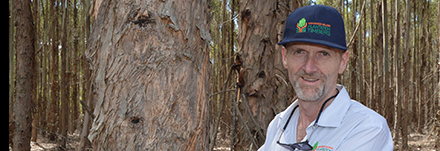The announcement by Kangaroo Island Plantation Timbers (KIPT) that the company would pull out of forestry after its plan to build the Smith Bay Wharf was rejected was more than a surprise but the fact that now the South Australian Government will try to salvage the remaining timber is an eye opener.
SA Primary Industries Minister David Basham has said the move by KIPT to level and burn its plantation forest was ‘crazy’ and he would be working with his department to try to get as much of the timber off the island as possible.
KIPT has been moving timber off the island following the bushfires of 2019 that burnt around 210,000ha of the island but has had to overcome a number of hurdles.
Some timber has been moved by ferry, but it was a slow process. Now the Government wants to step in and salvage as much timber as it can but there is no news on how they can make that happen.
With the timber shortage in SA the government says it can’t sit back and watch KIPT raze 14,500ha of plantation timber which amounts to almost 10% of SA’s plantations. But another question is whether they can they afford to lose the plantation forever.
State Planning Minister Vickie Chapman’s announcement that the government had rejected KIPT’s submission to build the port at Smith Bay was the final straw for KIPT. It was reported that Minister Chapman had vetoed the development despite her own department supporting the port.
For 18 months KIPT had been facing hurdles to moving the plantations’ logs off the island.
“We’ve encountered obstacles at every turn so the company’s view is that it has the capacity to just get on with that reversion program but if governments or third parties want to work with us on the salvage program, we are very happy to do that,” KIPT managing director Kieth Lamb told InDaily.
“We are very mindful that South Australia has a timber shortage, and we have 300,000 tonnes of high-quality structural timber that would make 10,000 homes and we are very mindful that there is great interest in salvaging it but at the moment we can’t get it off the island economically so that’s where the challenge lies.
“We need substantial assistance to get some activity going through Kingscote … but so far we’ve heard nothing.”
This will be a story to follow for some time as there are so many consequences to consider not only moving timber off the island but the burning of any remaining timber which will need to be done prior to the fire danger season, the resulting EPA requirements and a council that is at loggerheads with forestry.
Also, at loggerheads with what is happening on Kangaroo Island is the latest IPCC report that shows that sustainable forestry will generate the largest benefits for carbon stocks.
As Chief Executive officer of AFPA Ross Hampton said, Australia’s sustainable and renewable forest industries had significantly contributed to reducing C02 levels but could do a lot more.
“The Australian Government understands the importance of Australia’s forest industries and in 2018 committed to a billion more plantation trees over the next decade,” he said.
“This goal is a win/win to meet Australia’s demand for timber and wood-fibre as well as reducing C02 levels.
“Unfortunately, since that commitment only 2800 hectares of new plantations have been planted.”
And just a few weeks ago, Boral announced that it had divested itself of its timber business, having sold it to Pentarch Group it is interesting then to read the opinion piece by Gordon Wilson on the intricacies of Boral and forestry. What is to happen with the deals and contracts that Boral had now that the company has changed hands.







